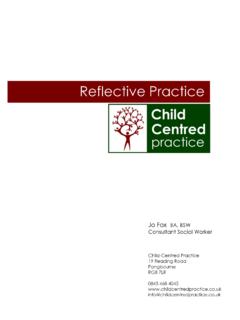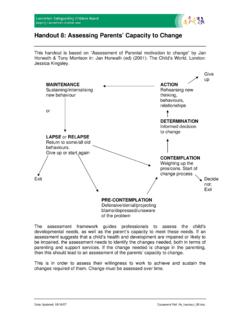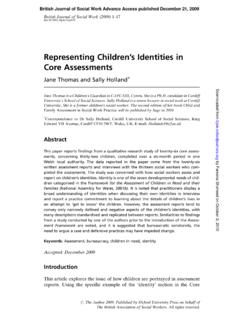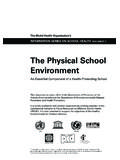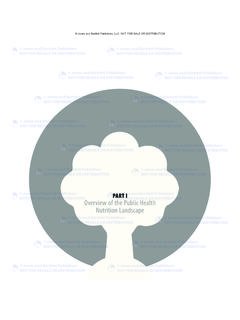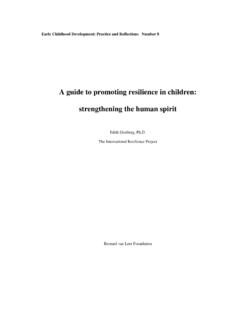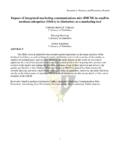Transcription of Building Resilience - Child Centred Practice
1 Jo Fox BA, BSW Consultant Social Worker Child - Centred Practice 19 Reading Road Pangbourne RG8 7LR 0845 468 4045 Building Resilience Building Resilience Child Centred Practice Ltd 2 Contents 1 Building Resilience .. 3 What is Resilience ? .. 3 Resilience around the world .. 3 Three Building blocks of Resilience .. 4 Placing Resilience within a cultural framework .. 6 The Seven Tensions .. 6 Implications for Intervention .. 7 A Multi dimensional Model of Resilience .. 7 Understanding risk and Resilience factors .. 11 Common protective factors for Resilience Building .. 11 Protective factors for 11 Finding out what the risk and protective factors can be attributed to the individual Child .
2 13 2 Tools to support understanding the Child s world .. 14 Building Resilience Child Centred Practice Ltd 3 1 Building Resilience What is Resilience ? Resilience is a key factor in protecting and promoting good mental health. It is the quality of being able to deal with the ups and downs of life, and is based on self esteem. Fonagy defines Resilience as normal development under difficult circumstances 1 Resilience around the world Dr. Michael Ungar, in his work with the International Resilience project, has suggested that Resilience is better understood as follows: "In the context of exposure to significant adversity, Resilience is both the capacity of individuals to navigate their way to the psychological, social, cultural, and physical resources that sustain their well-being, and their capacity individually and collectively to negotiate for these resources to be provided in culturally meaningful ways.
3 " This definition shifts our understanding of Resilience from an individual concept, popular with western-trained researchers and human services providers, to a more culturally embedded understanding of well-being. Understood this way, Resilience is a social construct that identifies both processes and outcomes associated with what people themselves term well-being. It makes explicit that Resilience is more likely to occur when we provide the services, supports and health resources that make it more likely for every Child to do well in ways that are meaningful to his or her family and community. In this sense, Resilience is the result of both successful navigation to resources and negotiation for resources to be provided in meaningful ways.
4 Some of the many different factors that affect Resilience include: secure early attachments confidence of being loved and valued by one s family and friends clear sense of self-identity (personal, cultural and spiritual) sense of self-efficacy (being able to make decisions and act independently) confidence to set goals and attempt to achieve them2. 1 Fonagy,P. et al (1994) The theory and Practice of Resilience . Journal of Child Psychology and Psychiatry. 35, Building Resilience Child Centred Practice Ltd 4 Three Building blocks of Resilience The three fundamental Building blocks of Resilience that underpin the many factors are: 1.
5 A secure base, whereby a Child feels a sense of belonging and security 2. Good self esteem, that is, an internal sense of worth and competence 3. A sense of self-efficacy, that is, a sense of mastery and control, along with an accurate understanding of personal strengths and limitations. (Gilligan, 1997) Gilligan goes on to identify six domains that contribute to the three Building blocks of Resilience . These 6 domains can be used understand the areas of impact on a children s Resilience : 3 2 Quality Protects Research Briefing No 9 : Promoting the mental health of children in need.
6 (Dr Heather Payne & Professor Ian Butler) 2003 DfES, Research in Practice . 3 (Brigid Daniel & Sally Wassell Assessing & Promoting Resilience in Vulnerable Children) Building Resilience Child Centred Practice Ltd 5 Each of these domains can be assessed using the Assessment Framework as demonstrated below: Child health and development Six domains of Resilience Health Education Emotional and behavioural development Family and peer relationships Self care and competence Identity Social presentation Secure base Education Secure base/friendships/positive values Secure base/friendships Secure base/social competencies Talents and interests Social competencies By relating the Resilience model back to the assessment framework it enables the practitioner to integrate Resilience into their assessment and planning work.
7 Understanding a Child s Resilience factors are crucial when planning to intervene effectively. Plans need to take into account both the external protective factors and the internal Resilience . These should then be understood in the context of the adversity and protective factors within the Child s family, friends, community and environment. This model can be enriched by adding the understandings of the cultural context that have been drawn from the work of the International Resilience project. By placing the Child within their cultural frame, and understanding Resilience as the ability to negotiate the tensions between the individual and the environment around them it helps broaden the focus from the ages and stages and attachment based model that applies more accurately to experiences of western children.
8 Building Resilience Child Centred Practice Ltd 6 Placing Resilience within a cultural framework The international resiliency project research also highlights a sense of a power greater than themselves and understanding of their place within the community and an ability to be able to negotiate with that community for resources. When looking at this model it is important to place it within the cultural context of the Child and their family. In other parts of the world, spirituality informs and impacts upon children and families belief in their own ability to make choices and have impact on the environment around them. Their sense of self may be rooted in things other than getting their needs met as an individual.
9 Below is a table that was amalgamated as part of the research carried out by the International Resilience project. It highlights both the common and different responses from children in westerns cultures and those in non western cultures in terms of their sense of attachment, self efficacy and competency. 4 The varying answers to the same set of questions highlight the different ways the groups experienced these phenomena in their lives. Table 14: Thematic Content of Each Factor by Factor Structure* Western girls and boys Non-western girls Non-western boys, high social-cohesion Non-western boys, low social-cohesion The way I live my life reflects the values of my community (.)
10 86) I experience self-efficacy individually and in community relationships (.82) I have a respected place in my community (.77) My health and social needs get met (.70) My future is mine to create alone and with the help of others (.84) Solutions to life s challenges are rooted in relationships (.72) I experience self-efficacy (.75) I am confident (.91) I am socially mature (.80) I have my emotional and instrumental needs met (.77) I have emotional maturity (.56) I can express myself in ways I value and others value about me (.92) I do things adults do (.78) My life philosophy is rooted in my culture (.75) I feel responsible for my community (.61) I have a life-philosophy (.

